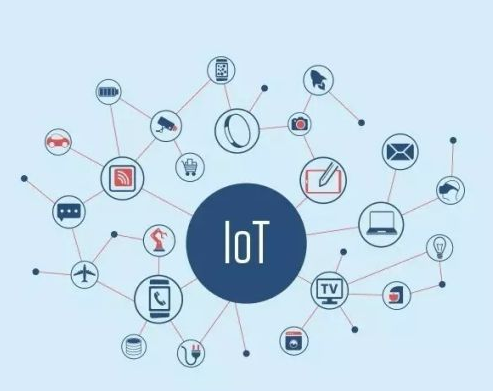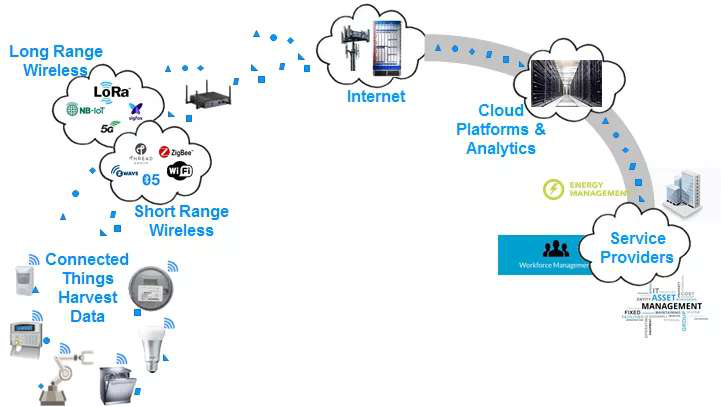IOT refers to the real-time collection of any object or process that needs to be monitored, connected, and interactived, as well as its sound, light, heat, electricity, mechanics, chemistry, biology, location and other required information through various possible network access through various devices and technologies such as information sensors, radio frequency identification technology, global positioning system, infrared sensors, laser scanners, etc. To realize the ubiquitous connection between things and things, and between things and people, and realize the intelligent perception, recognition and management of things and processes. The Internet of Things is an information carrier based on the Internet, traditional telecommunications network, etc., which enables all ordinary physical objects that can be independently addressed to form an interconnected network.
An introduction to communication standards in the Internet of Things world
The communication technology of the Internet of Things can be divided into short distance and long distance according to the signal transmission range. The short distance transmission technology according to the main technologies include Wi-Fi, ZigBee, Z-Wave, Thread, Bluetooth™, Wi-SUN, etc. It is mainly applied to existing mobile devices such as mobile phones, tablets and wearable devices, or smart home, smart factory and smart lighting and other fields. In the past, long-distance communication technologies were mainly 2G, 3G, 4G and other mobile communication technologies. However, due to the different transmission requirements of the Internet of Things (iot), such as large bandwidth and low delay, many iot applications have small data packet requirements and high delay tolerance, and at the same time need to cover more extensive or deep into the ground and other heavily shielded areas. For the above applications, a communication technology with long distance and Low Power consumption has been developed, which is collectively known as Low Power Wide Area Network (LPWAN), and NB-IoT is the main spectrum communication technology for user license. The following is a simple architecture diagram of the Internet of Things system.
Short Range Wireless communication Technology: The Last mile of the Internet of Things world
If the choice is made according to the characteristics of long distance wireless communication technology, short distance communication with general microcontroller plays an important role in the terminal device, especially with sensors to collect data.
WIFI: Wireless LAN based on IEEE 802.11 standard, can be regarded as a short distance wireless extension of wired LAN. All you need to set up WIFI is a wireless AP or a wireless router, and the cost is low.
Zigbee: is based on IEEE802.15.4 standard of low speed, short distance, low power consumption, two-way wireless communication technology LAN communication protocol, also known as purple bee protocol. Features: Close range, low complexity, self-organization (self-configuration, self-repair, and self-management), low power consumption, and low data rate. ZigBee protocols are divided into physical layer (PHY), media access Control layer (MAC), transport layer (TL), network layer (NWK), and application layer (APL) from bottom to top. The physical layer and media access control layer comply with the IEEE 802.15.4 standard. It is mainly used for Sensor and Control applications. It can work in three frequency bands of 2.4GHz(global popular), 868MHz(European popular) and 915MHz (American popular), with the highest transmission rates of 250kbit/s, 20kbit/s and 40kbit/s, respectively. Single point transmission distance in the range of 10-75m, ZigBee is a wireless data transmission network platform composed of one to 65535 wireless data transmission modules, in the whole network range, each ZigBee network data transmission module can communicate with each other, from the standard 75m distance for unlimited expansion. ZigBee nodes are very power-efficient, with batteries that last from six months to around two years and up to 10 years in sleep mode,
Z-Wave: It is a short range wireless communication technology based on RF, low cost, low power consumption, high reliability and suitable for network, which is led by Zensys, a Danish company. The working frequency band is 908.42MHz(USA)~868.42MHz(Europe), and FSK(BFSK/GFSK) modulation mode is adopted. The data transmission rate is 9.6 kb to 40kb/s, and the effective coverage range of the signal is 30m indoors and more than 100m outdoors, which is suitable for narrow broadband applications. Z-Wave uses dynamic routing technology. Each Z-Wave network has its own network address (HomeID). The address (NodeID) of each node in the network is assigned by the Controller. Each network can hold a maximum of 232 nodes (Slaves), including control nodes. Zensys provides Dynamically Linked Library (DLL) for Windows development and developers of API functions inside it for PC software design. The wireless network constructed by Z-Wave technology can not only realize the remote control of household appliances through the network equipment, but also control the equipment in the Z-Wave network through the Internet network.
Post time: Jan-02-2023








